Satellite and aerial maps of Sumburgh with nearby locations
| Nearby locations | Km | Bearing | |
|---|---|---|---|
| | 31.8 | 015 | GBLER |
| Lerwick / Tingwall , Scotland | 34.9 | 004 | EGET |
| | 40.4 | 206 | |
| Fair Isle , Scotland | 42.7 | 206 | EGEF |
| | 45.3 | 206 | |
| Foula Airfield , Scotland | 50.2 | 302 |
Sumburgh |
1937 to present | ||
| 59° 52' 43.68'' N 1° 17' 28.68'' W | ||
| 17nm S of Lerwick, Shetland Islands, Highlands and Islands, Scotland | ||
| ICAO: EGPB | IATA: LSI | |
| Elevation: 21 feet | ||
The airport was built in the late 1930s to provide air services to a number of Scottish airports. From 1940 it was an RAF fighter base to intercept Luftwaffe raids from Norwegian bases, protect the Shetlands but also as reserve cover for the Home Fleet's northern anchorage at Scapa Flow, further south in the Orkney Isles. Sumburgh became Shetland's premier airport over Lerwick (Tingwall) in 1953 and because of its proximity to the mainland. In 1971, in response to the North Sea hydrocarbon exploration and production industry, a brace of C-47s began scheduled services from Aberdeen and helicopter operations soon followed. 
Its perimeter road curves around three-quarters of the airfield to the main terminal, built in 1979. Since 1982 the Wilsness Terminal has supplemented passenger movements. To improve reliabilty, a PAMOS weather monitoring system was installed in 1997 but in December 1999, the majority of North Sea oil-related helicopter operations transferred further north to Scatsta, nearer the Sullom Voe oil terminal. It also moved the traffic away from the conspicuous Sumburgh Lighthouse (an 1821 marvel from the prolific Stephenson family, for the Northern Lighthouse Board) and the important Old Scatness Broch archaeological site. Sumburgh is the most northerly SAR base, towards the northern margin of the UK Search and Rescue Region. 
List of units at Sumburgh |
| Years | Unit | |
|---|---|---|
| 2016/23 | Babcock Mission Critical Services Offshore | |
| 1985- | Shetland District | S-92, S-61 H-3, |
Sumburgh News |
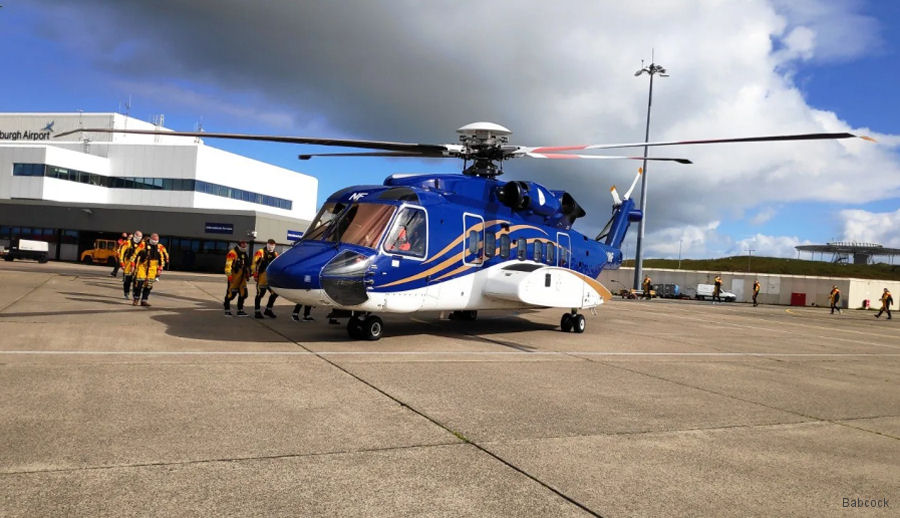
Sumburgh Oil and Gas Contract Starts
02-Jul-20 - Babcock S-92 helicopters began 5-year contract for daily flights from Sumburgh, Shetland Islands, to oil and gas platforms in the northern North Sea on behalf of EnQuest, TAQA and CNR International. Workers arrived from Aberdeen on Loganair ATR-42 aircraft #oilandgas
Five-Years Contract for Babcock in North Sea
08-Mar-20 - Babcock Mission Critical Services (MCS) Offshore starting 100 helicopter flights per month next July from Sumburgh, Shetland Islands, northern Scotland, to support oil and gas operations of CNR International, EnQuest and TAQA #oilandgas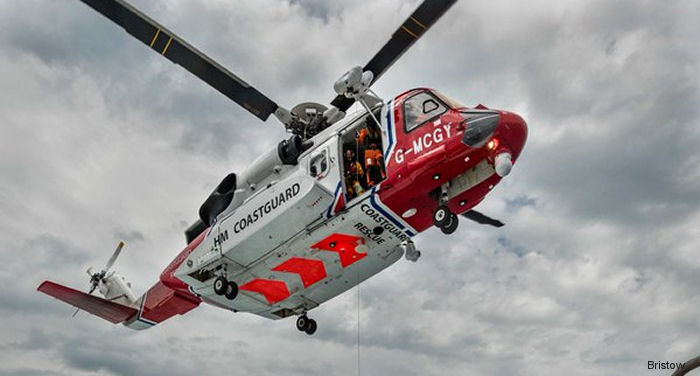
1,000th Mission for Bristow SAR Sumburgh
21-Feb-20 - HM Coastguard Search and Rescue (SAR) helicopter base at Sumburgh in the Shetland Islands, Scotland completed its 1,000 mission since operated by the civilian service (Bristow) from 2013 #Sumburgh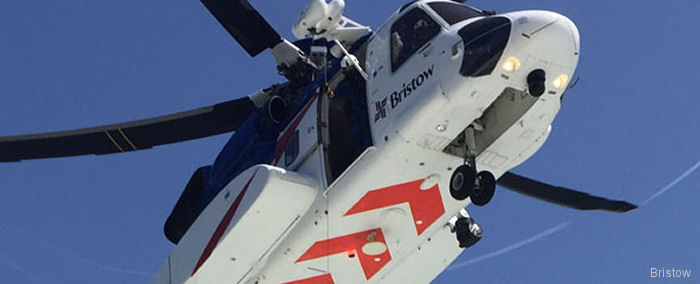
Bristow 5-Years Contract with BP in North Sea
07-Jun-19 - Bristow, and Eastern Airways, awarded 5-year contract to support BP’s North Sea operations with S-92 out of Aberdeen and Sumburgh #oilandgas
Bristow S-92 to Support TAQA in East Shetland Basin
08-Mar-18 - Bristow in partnership with Eastern Airways to provide offshore transport to TAQA in the East Shetland basin with Sikorsky S-92 and Saab 2000 aircraft
Bristow Sumburgh SAR Completes 500 mission
16-Dec-16 - HM Coastguard search and rescue (SAR) helicopter service of Sumburgh, in Shetland off the Scottish coast, passed the 500 missions milestone since operated by Bristow from July 2013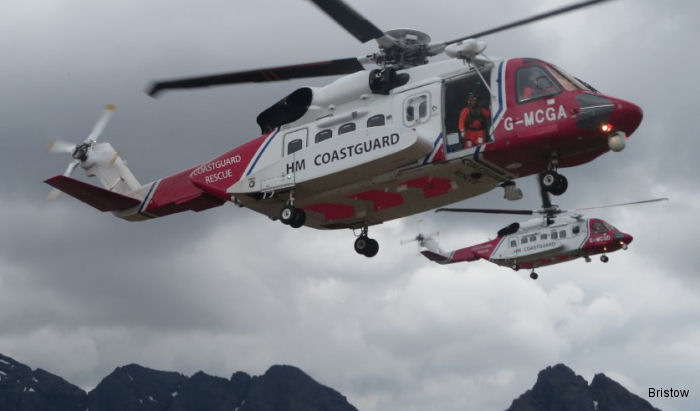
Bristow SAR Third Anniversary in Northern Scotland
29-Jul-16 - Bristow’s Gap SAR search and rescue contract celebrates third anniversary from Sumburgh and Stornoway in Northern Scotland with more than 900 missions with the S-92 helicopters
Bond Launched Aberdeen New Route Via Sumburgh
16-Dec-15 - Bond Offshore Helicopters launched new service to take passengers to offshore Oil and Gas facilities in the Northern North Sea from Aberdeen via new facilities at Sumburgh Airport, Shetland.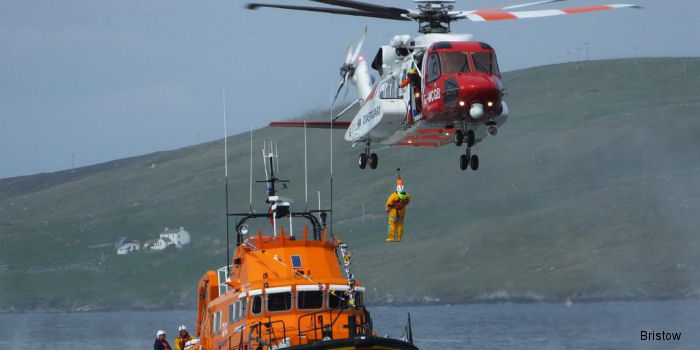
UK Sumburgh SAR 335 Taskings in First Two Years
09-Sep-15 - HM Coast Guard Sumburgh search and rescue (SAR) helicopter base responded to 335 taskings in the first two years under Bristow operation.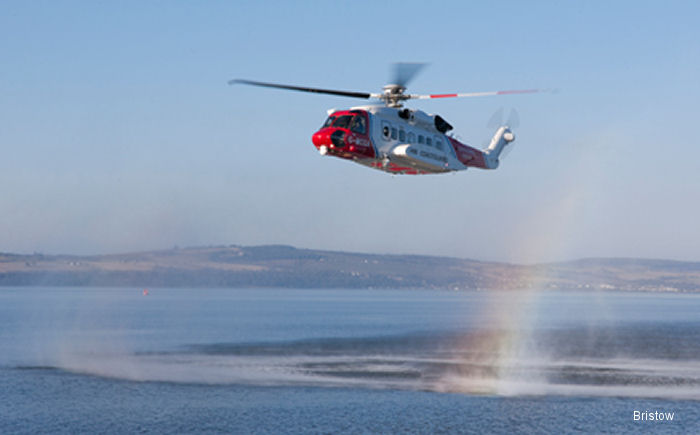
Bristow First Anniversary of Northern Scotland SAR
29-Jul-14 - Bristow Helicopters Ltd recognized its first anniversary of delivering the Gap SAR search and rescue contract from Sumburgh and Stornoway this summer.| 25-Apr-14 | UK SAR Oscar Charlie Legacy in Naming Ceremony |
